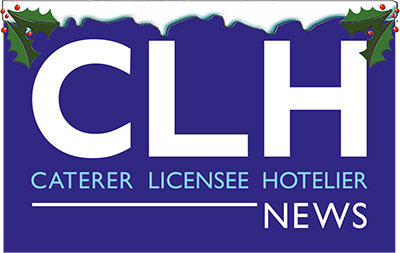Transforming Cash Flow to Drive Hospitality Growth

By Patrick Clover, Founder, Stampede (https://stampede.ai)
One of the biggest problems stifling growth for restaurant owners and chains is cash flow. But, in order to have cash flow, you need to have paying customers. So, what steps can restaurant and hospitality businesses take right now in order to support growth and gain more loyal customers? From minimising no shows to increasing prepayment income and driving more value from each customer, Patrick Clover, outlines the opportunities to improve cash flow for long term success.
Introduction
The hospitality industry is in a time of transition. Rising costs are without any doubt squeezing profitability, but it is those venues that have failed to adapt to the new customer behaviours that are really feeling the pinch. Good customers expect both efficiency – in booking and ordering – and an amazing experience. And, of course, they are keen to share those experiences both good and bad. Bad customers will cut and run – while ‘dine and dash’ events remain rare, no-shows have risen from 12% to 14%, a trend that costs the hospitality industry an estimated £17.59bn in lost sales every year.
These lost sales and rising costs are putting serious pressure on cash flow. Even if the business is still profitable, it is cash flow management that can make the difference between business success and failure. Balancing outputs and income is tough. Smaller venues have little leeway when it comes to supplier negotiation: without the buying power of big chains, rising costs simply have to be managed somehow. Yet every hospitality provider has the ability to improve income management – if they take a far more proactive approach to every aspect of customer engagement.
Today, too many hospitality providers have adopted a reactive, transactional approach to customers. Fear of no shows and concerns about bad reviews – both fake and genuine – have created a barrier between businesses and their customers that has eradicated loyalty. This barrier is also jeopardising the repeat business that is key to improving cash flow and is preventing businesses from achieving more value from satisfied customers.
Advance Income
There are immediate changes that can be made to improve cash flow.
Asking for deposits on booking, especially for larger parties, is becoming standard and mitigates the risk of no shows. But venues can take it one step further. Entertainment locations offering bowling or darts, for example, that request event payment in advance not only transform their cash flow but also are far better placed to manage outgoings such as staffing levels based on pre-booked demand.
Family restaurants can encourage customers to pre-order and pay for food in advance by promising faster turnaround, for example, as well as a small discount – a cost that is more than covered by the value of the cash flow boost from the pre-payment.
Key to the success of this approach is the quality of customer engagement, not only in the booking stage but throughout the visit and afterwards. Regular customers should be rewarded, not only with offers to entice them to book more frequently but also with an in-venue experience that reflects their loyalty. Birthday discounts, free drinks on the 11th visit, free guest Wi-Fi – there are so many ways to entice customers to increase their spend. Yet far too few hospitality venues have achieved the level of engagement sophistication required by today’s customer base.
Increase Spend
One problem holding back the move to better customer engagement is that many of the technologies used today are sold as separate systems. When customers are using unconnected booking systems and review platforms, it is difficult to gain an accurate understanding of each individual. Even if a customer has opted into email marketing, it is hard to align one individual with their bookings, purchases and feedback.
The impact on costs is significant too, especially the cost of customer acquisition through paid channels such as Google and Facebook.
What’s worse is that the lack of customer understanding and insight means venues are not only paying to drive engagement to their existing customer base but also fighting off the competition. Why pay advertising platforms to ‘rent’ space to potentially re-engage with existing customers? While ‘owned’ channels such as email marketing also incur a cost, intelligence led CRM can be far more effective at driving engagement.
If a customer has already visited 10 times, they like the venue – so it is crazy to be paying to re-acquire that customer for the 11th time, simply because they have to use social media to find you, rather than being actively targeted with a compelling offer. Furthermore, the use of separate, unbranded booking platforms automatically dissipates any brand engagement, again missing a critical opportunity to improve the customer experience and perception from the start.
This combination of data siloes and technology integration challenges leads to more cost and ineffective customer engagement. In contrast, a unified solution that captures every customer interaction, from Wi-Fi use to booking, in-venue spend to review feedback, provides a single view of each customer. The same platform can drive marketing campaigns and loyalty schemes, leveraging the accurate, in-depth customer information now available.
Personal Touch
By improving insight, understanding and agility, a single solution allows hospitality venues to achieve the level of engagement customers now expect. Venues can track the success of campaigns and loyalty schemes to quickly understand what’s working and what’s not.
They can determine how best to improve footfall and customer spend.
They can also rapidly surface any problems that could be affecting cashflow – such as quality issues at one venue that routinely requires meals to be comped – and address the issue quickly.
The impact on cash flow management is significant. Pre-booking and pre-payment radically boost income and also support far more accurate forecasting and planning to reduce unnecessary overspend.
Loyalty schemes and offers allow venues to drive additional income from each customer, but can also be used to entice customers into locations during typically quiet times to minimise those hours when staff costs are higher than customer spend.
The gains are steady and incremental. Leveraging the in-built booking system with the venue’s own logo rather than a generic platform reinforces brand awareness. Encouraging loyal customers to write reviews boosts the venue’s Google ranking, automatically driving more footfall and more income. With a unified system that delivers consistent branding, every customer interaction reinforces brand engagement. Critically, with the power to communicate directly with customers based on true understanding of their behaviours, businesses can take control and improve the management of cash flow.
